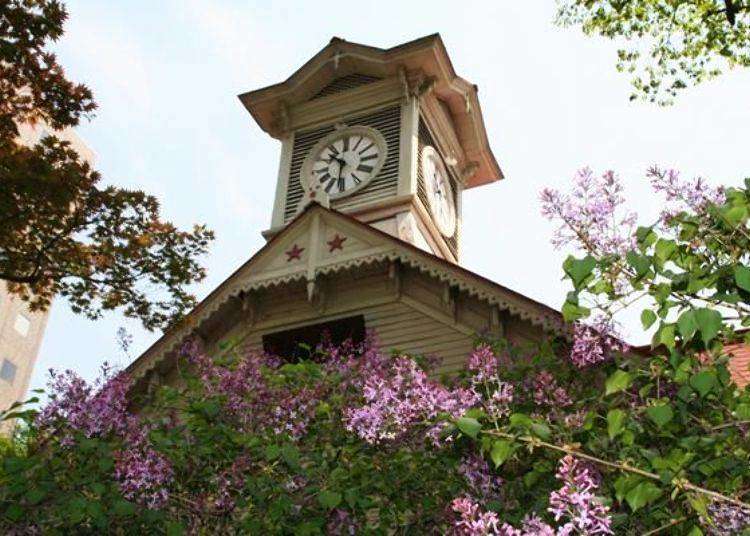
The Sapporo Clock Tower is one of the more popular sightseeing spots in the city. This old historical building is nestled among the taller buildings in the city center, and from whatever angle you view it, you are presented with unique photo opportunities.
Plus, the inside of the building also has a picture-perfect atmosphere where you can also learn the history of the clock’s mechanism. A quick snapshot of the place will not do it justice!
There are several interesting photo spots that highlight the charms of this building that we will introduce here.
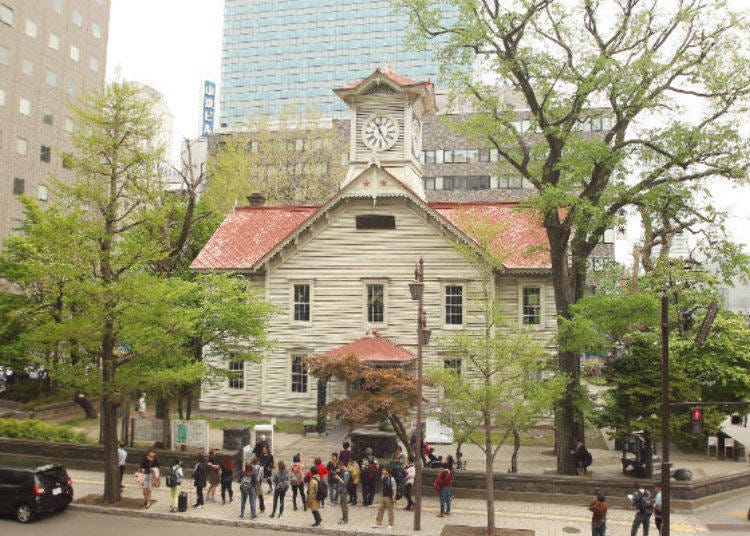
Prime photo spots! Classic Version
Tall office buildings surround the Sapporo Clock Tower. For that reason, it is hard to snap photos of it without them appearing in the background. There are ways, however, to shoot from different angles that can result in a better picture!
Here are three locations from which to capture that classic look. This is the first one!

The secret to taking this photo is not to take it from the sidewalk, but to bend down and shoot upwards with the clock tower in the background. If you take a picture standing normally, the buildings behind the clock tower are too imposing, so by squatting down, their presence is minimized, and the clock tower is more beautifully presented.

The second classic spot is near the front and close to the first spot.
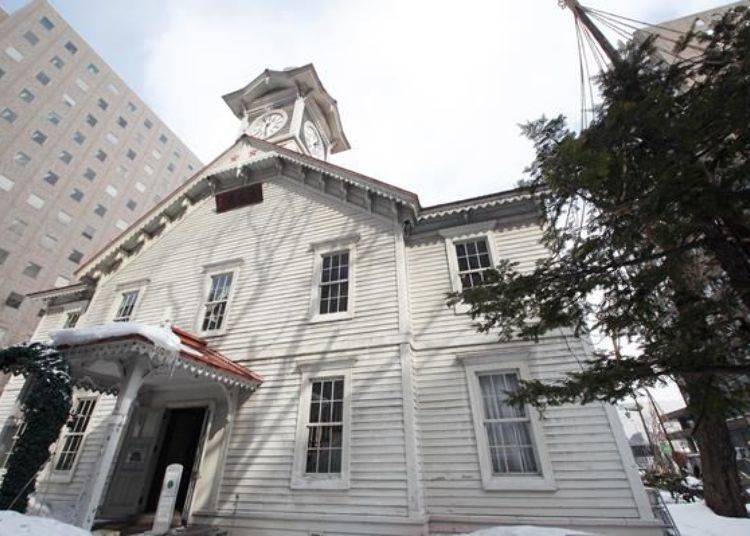


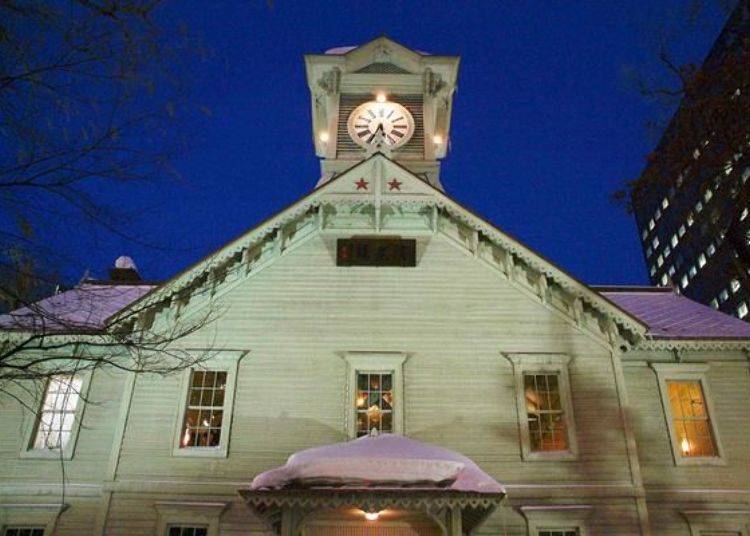
There are three good ways to photograph the front of the clock tower. The tall office buildings will be visible, but the whole scene is attractively presented.
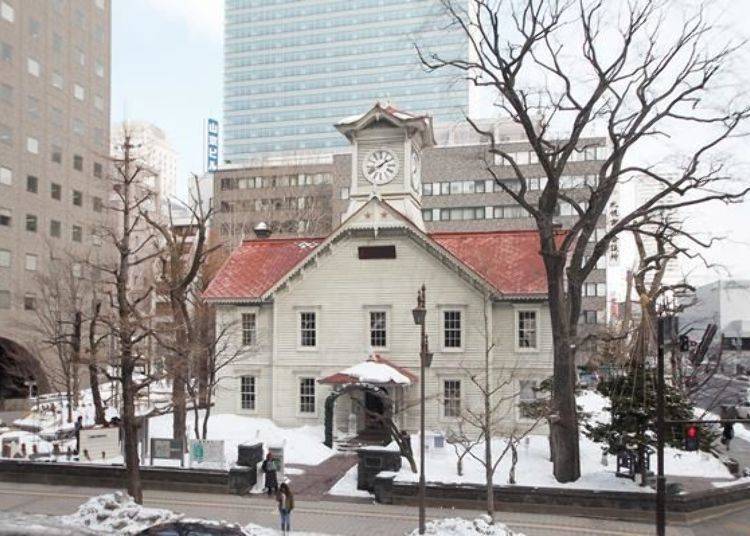
This photo spot is the Clock Tower Photo Plaza on the second floor of the MN Building facing the clock tower on the opposite side of the street. Visitors may freely enter and stand on the outside terrace to view the clock tower.

The front of the clock tower faces almost directly west. For that reason, the best time to photograph the clock tower is in the afternoon when it gets the western light.
If you want to take photos of yourself with the clock tower in the background, you should use a flash otherwise your face would be dark from the shadow of the buildings.
Prime photo spots! Alternative Snaps
The spots we previously introduced produce photos typically seen in travel magazines and pamphlets. The following are little-known spots that enable you to capture a slightly different view.
This first one is a view of the left side of the front of the clock tower taken from a northwest angle.
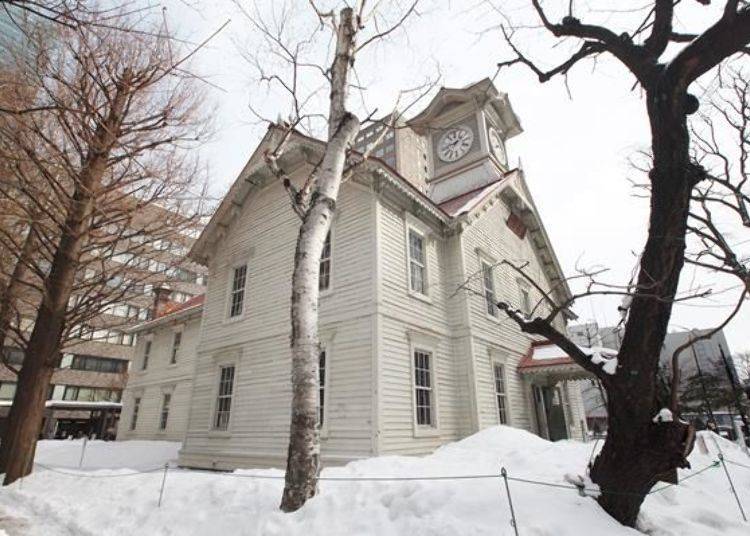
Compared to the southwest side the trees obstruct the view a bit, but you can avoid the branches by shooting upwards.
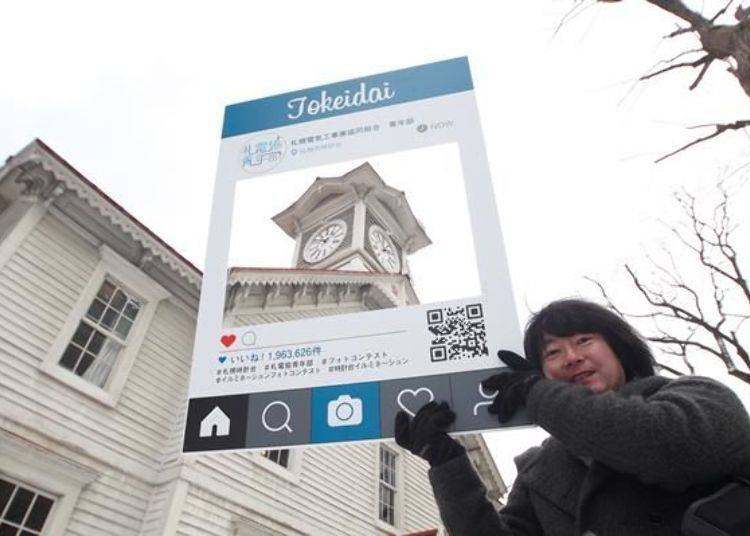
As you walk around the clock tower, you’ll come to another unique photo spot.
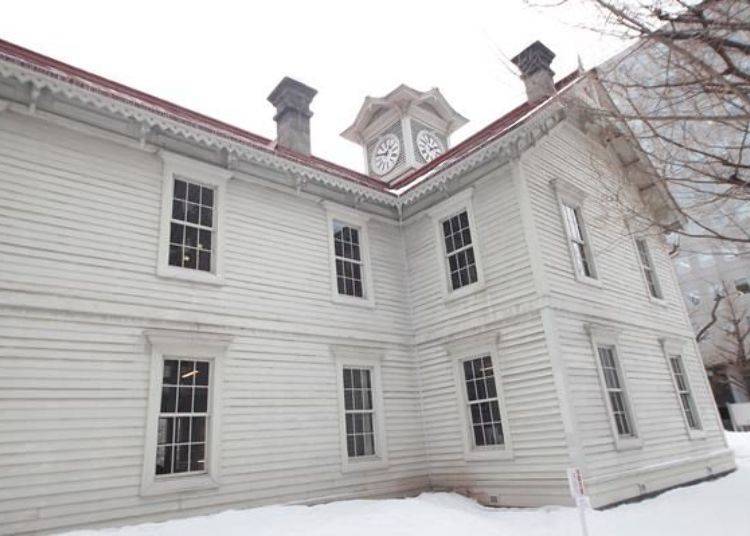
The clock tower is a long east-to-west building so if you proceed to the east it becomes harder to see the clock tower because it is to the west of the front of the building.
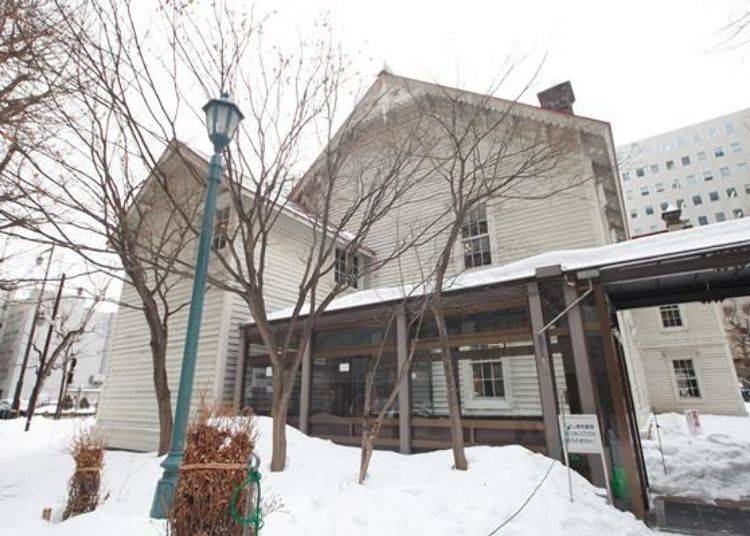
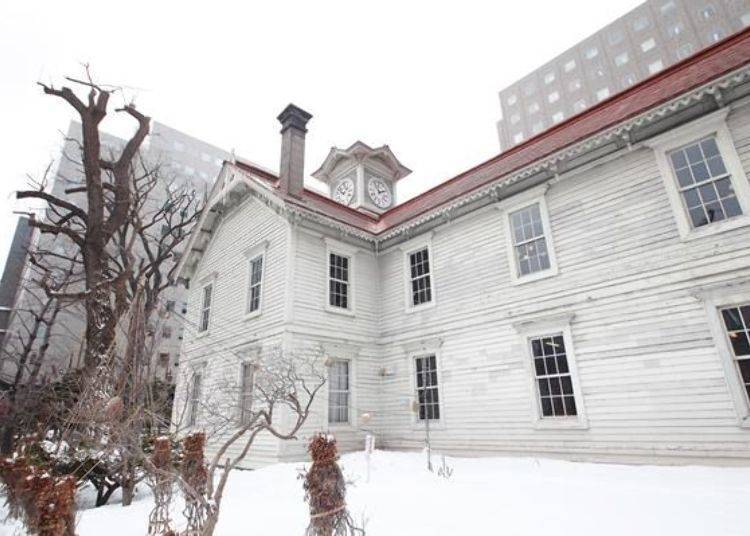
We have gone around the building pointing out good spots, but there is still one more. This is the view.
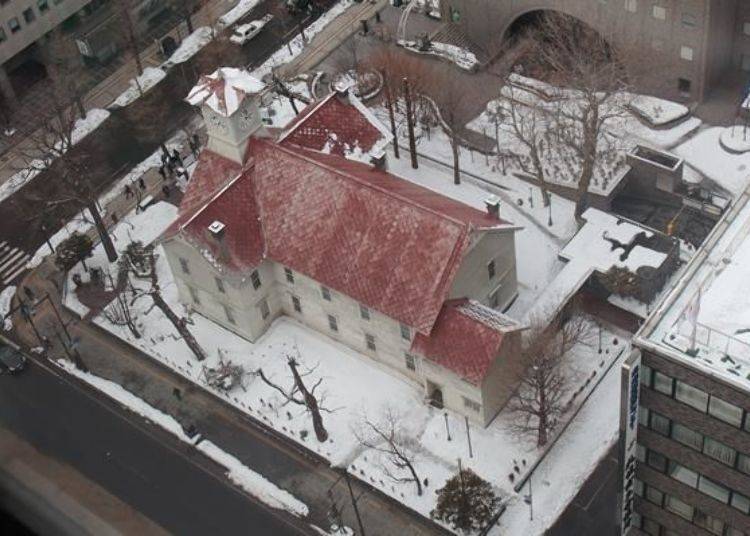
The shot was taken from the observation corridor on the roof of the 19-story Sapporo City Hall that stands across the street on the south side of the clock tower. The clock tower is surrounded by office buildings, but it is possible for anyone to enter the city hall and take photos from the observation corridor which makes it a valuable photo spot.

-
Sapporoshiyakushohonchosha Tembokai札幌市役所本庁舎 展望回廊
- Address 〒060-0001北海道札幌市中央区北1条西2/2, Kita1-jonishi, Chuo-ku Sapporo-shi, Hokkaido, 060-0001, Japan
- Phone Number 011-211-2111
Fee: free
Open times: End of April - end of October weekdays 9:30 a.m. - 4:30 p.m.; 10:00 a.m. - 4:00 p.m. on weekdays during the Sapporo Snow Festival
*May be closed during bad weather.
Closed: Saturday, Sunday, national holidays, and from the end of October to the end of April (except on weekdays during the Sapporo Snow Festival)
There are many different locations and angles for taking good photos and perhaps you can discover others, too, that would enable you to take uniquely different commemorative photos of the clock tower.
*The photos, except for some, were taken in March 2018, so it is possible that since then there may have been changes to the surrounding area.
*Construction sheets will cover parts of the building between June 1 and October 31, 2018 because repairs and painting will be undertaken at that time so it will not be possible to take photos of the exterior. The clock tower also will be closed during that time.
Check out the history of the clock tower!
Let’s next take a look inside the clock tower.
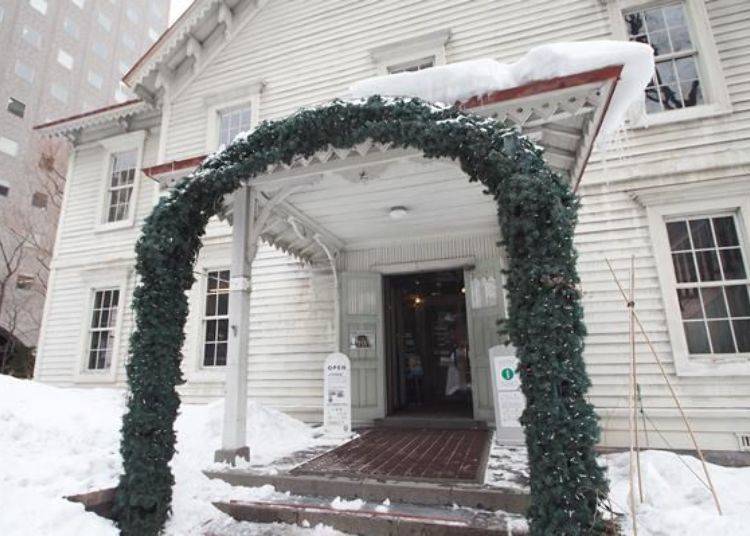
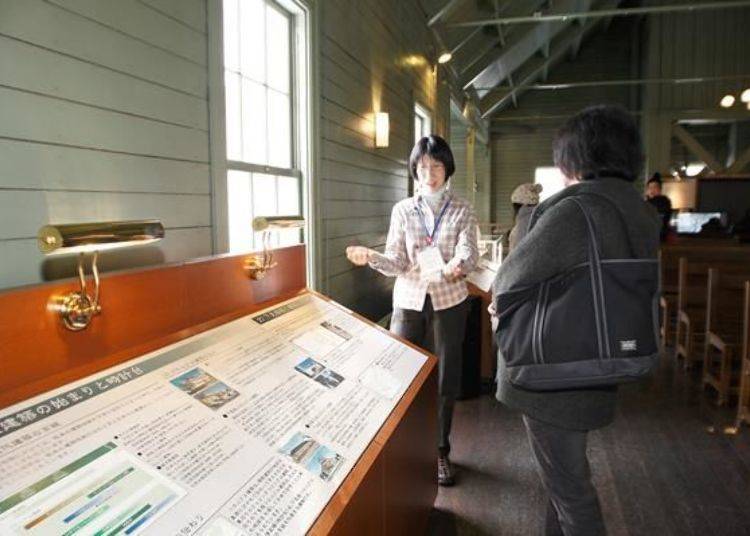
The second floor of the clock tower (the actual tower is five stories tall). An exhibition describing the history of the clock tower is on the first floor while on the second floor there are scenes recreated showing events during the Meiji period and at the same time information about concerts and other events to be held in the hall which can be rented out for those purposes.
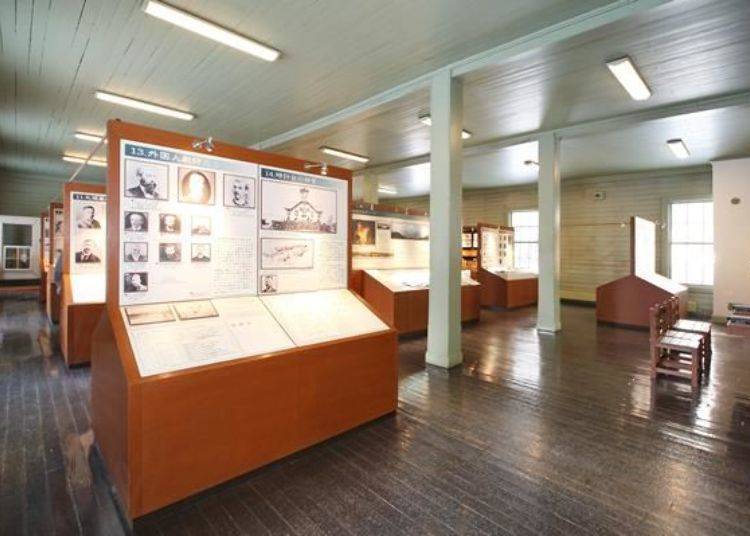
The clock tower was constructed in October 1878 as a hall to be used for martial arts training at the Sapporo Agricultural College as envisioned by Professor Clark. Three years later a clock made by the Howard Company of America was installed and the building assumed its current shape.
For that reason the official name of the clock tower is The Martial Arts Hall of the Former Sapporo Agricultural College.
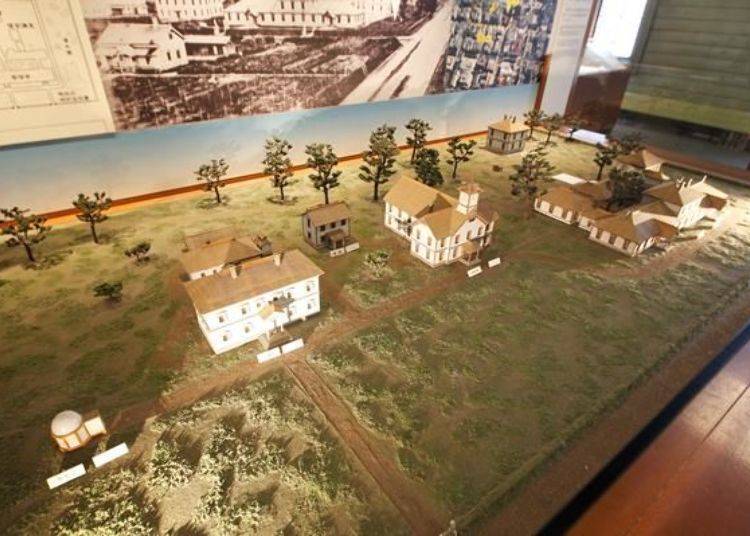
In 1903 the Sapporo Agricultural College moved to another location and the clock tower became the property of Sapporo City. From that time on Sapporo residents called it the “Clock Tower”. After that it was used as a public hall and as a library until 1966. In 1968 it became a sightseeing facility and since 1998 it has been used as a rental hall and for cultural activities.
To learn more, let’s move on to the second floor.
Have your picture taken with Prof. Clark
The second floor hall has a retro feel to it.
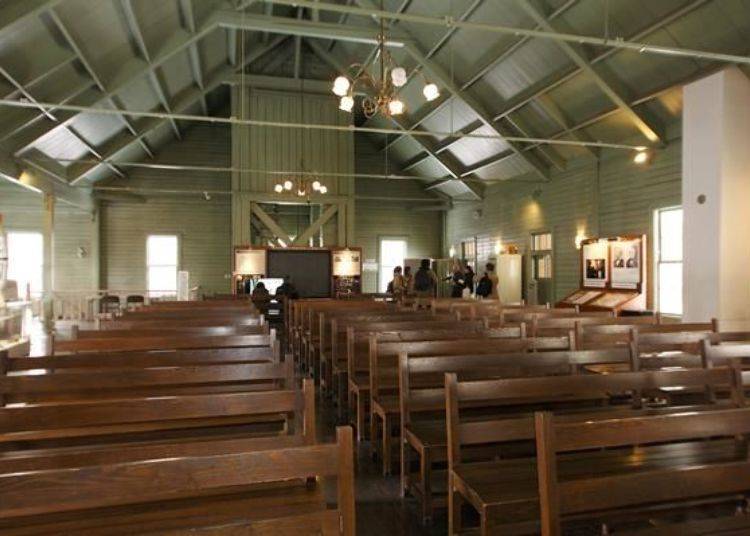
Here one can imagine scenes of diploma presentation ceremonies that took place when it was the Sapporo Agricultural College.
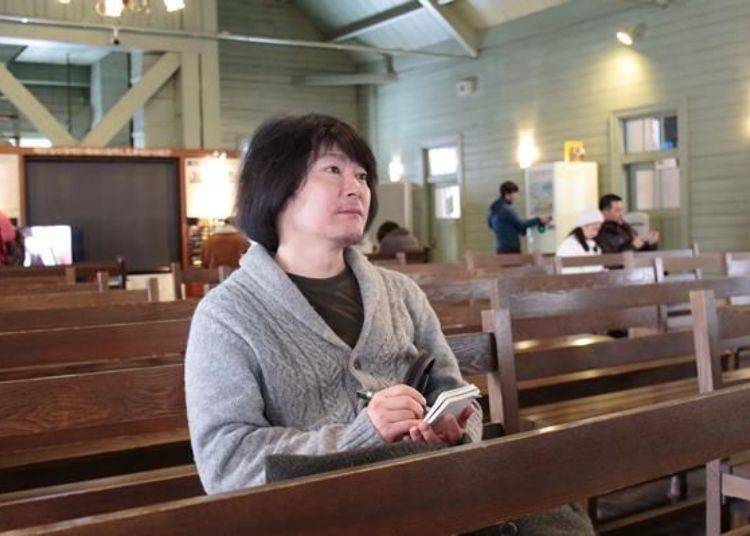
In front of the rows of benches there is a tiered platform.
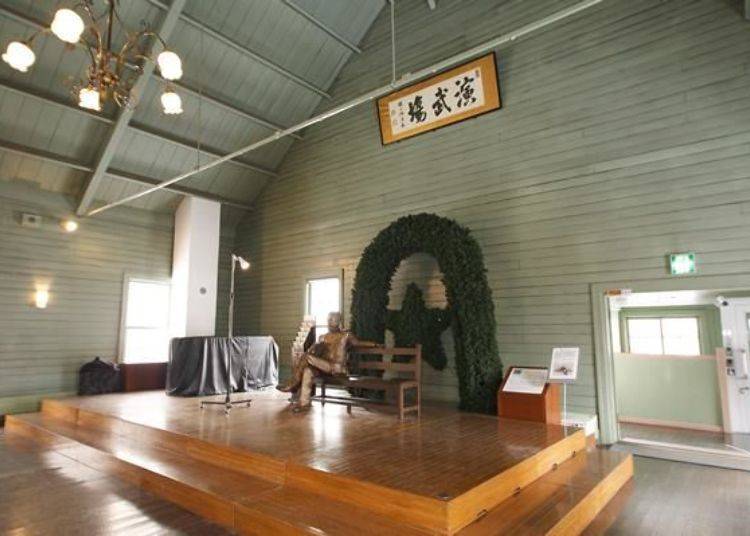
Wondering who it might be I drew nearer

There is a space on the bench next to him and he appears to be beckoning you to sit next to him.
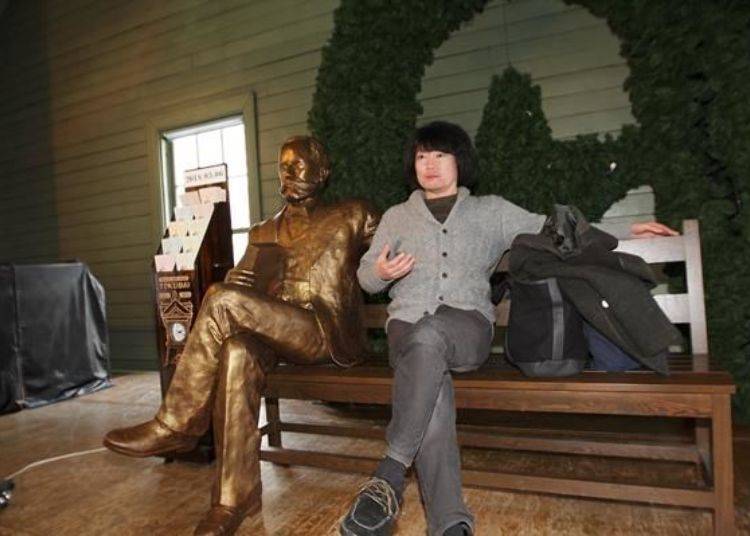
There are other bronze statues of Prof. Clark elsewhere in the country, but this is the closest and the best one for having your photo taken with it.
The secret about the bell in the clock tower
On the side of the second-floor hall opposite the bronze statue of Prof. Clark is the entrance to the mechanism room of the clock tower and also an exhibition showing how the clock works.
Only maintenance personnel are allowed to enter the mechanism room, however, the exhibition outside it shows how the clock works.
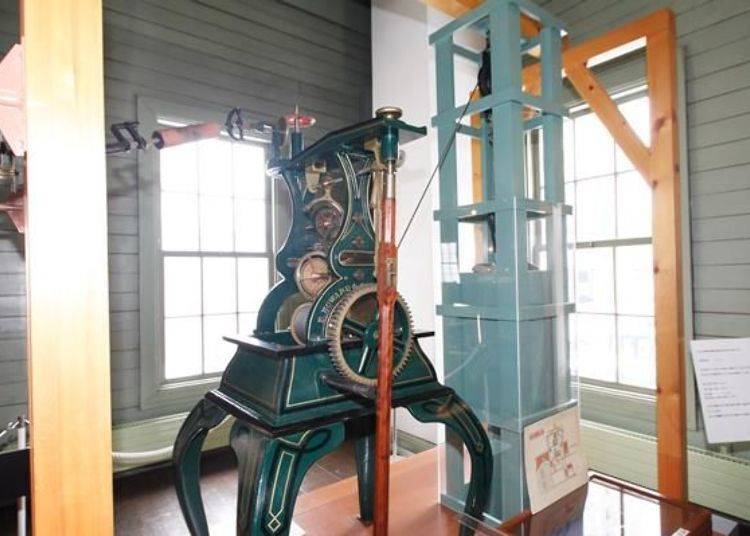
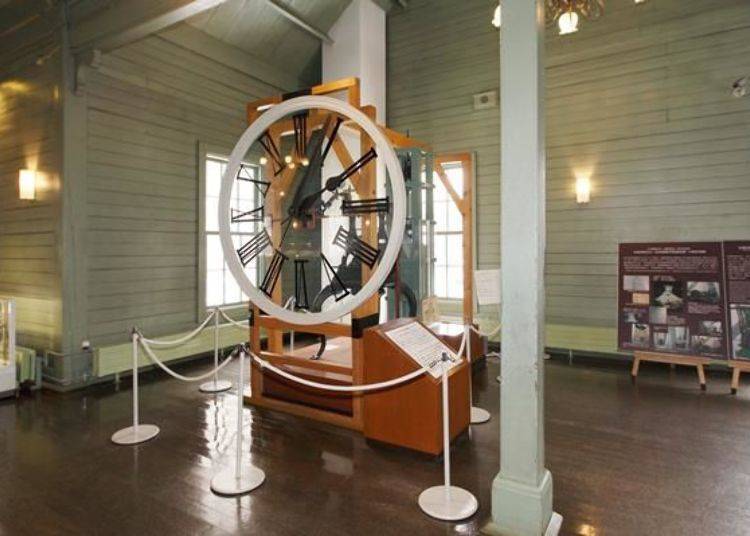
The pendulum uses heavy weights to run the clock. The mechanism for moving the hands and that for ringing the bell all use heavy wire cables and every four days someone would have to wind up the wire to keep the clock running continuously day and night.
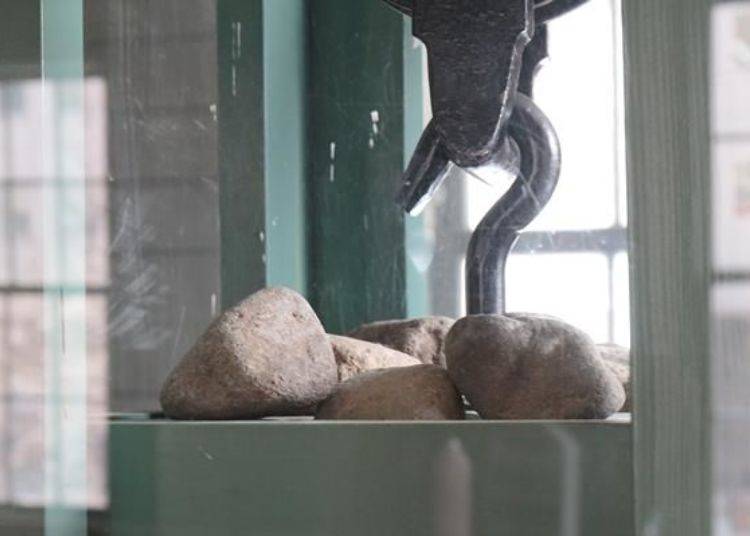
The bell sounds the hour by ringing the same number of times as the hour which means it rings 156 times a day. This is a good place to be a few minutes before the hour.

The bell has a high-pitched peal. It is a sound from the Meiji era that you can both hear and feel still today.
Last of all let’s check out souvenirs!
There is a shop in the corner on the first floor that sells clock tower goods.
There are a number of different items here including the “Tokkei” and “Tokei Daijin” characters.

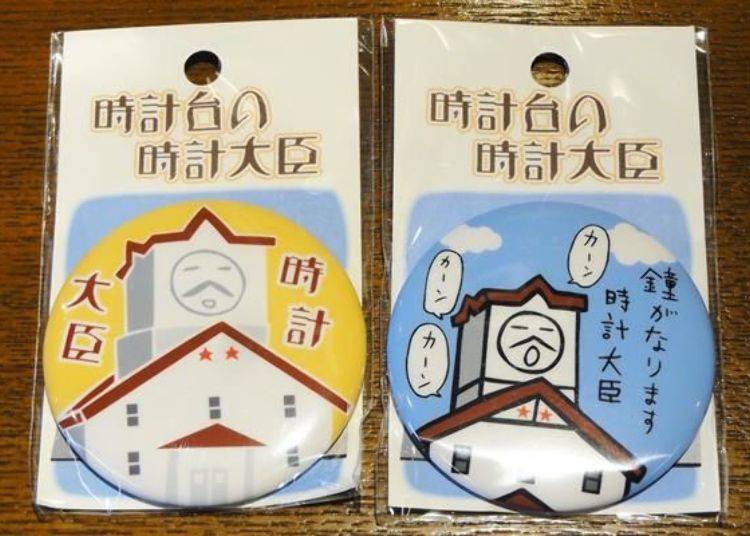
There are other popular original items, too.
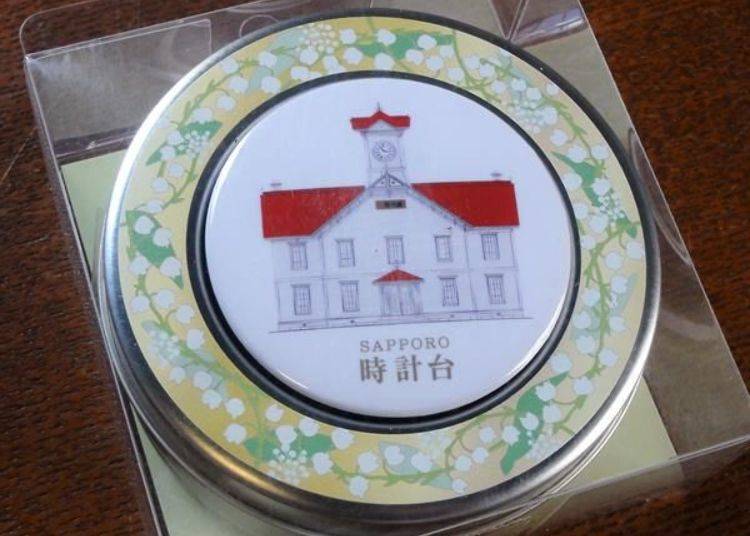
Makes a charming gift!
The attractions of the clock tower can be enjoyed from different angles and different places and a tour of the inside is also informative and enjoyable. This is a place where you can take many kinds of different photos and a great place to leisurely pass the time listening to the sounds of the bell that has rung throughout the city since Meiji times.
Admission: 200 yen for adults; free for high school age and younger
Hours: 8:45 a.m. ~ 5:10 p.m. (last admission 5:00 p.m.)
Closed: January 1 ~ 3 ※June 1 ~ October 31, 2018 it will be closed for maintenance and painting. It will not be possible to take photos of the exterior at this time because it will be covered in construction sheets.
-

-
Address
Chuo-ku, Sapporo-shi, Hokkaido north 1 west 2, 060-0001
View Map -
Nearest Station
Odori Station (Namboku Line / Tozai Line / Toho Line)
- Phone Number 011-231-0838
-
Address
Chuo-ku, Sapporo-shi, Hokkaido north 1 west 2, 060-0001
*Prices mentioned in the article all include tax
Written by : Nobuhiro Kawashima
- Area
- Category
*Prices and options mentioned are subject to change.
*Unless stated otherwise, all prices include tax.
Popular Tours & Activitiess
Recommended places for you
-
Appealing

Shirogane Blue Pond (Aoiike)
Rivers, Lakes & Canyons
Furano / Biei / Sounkyo
-

Farm Tomita
Other Nature
Furano / Biei / Sounkyo
-
Appealing

Shiroi Koibito Park
Theme Parks
Sapporo / Chitose
-
Appealing

Kanemori Red Brick Warehouse
Shopping Malls
Hakodate
-
Appealing

Odori Park
Parks
Sapporo / Chitose
-
Appealing

Rukku and Uohei
Izakaya
Sapporo / Chitose
-
Ad

Smart Ways to Avoid Crowds and Enjoy a Safe, Comfortable Trip to Noboribetsu Onsen
-

Scenic Road Trip from Hakodate to Matsumae: Stunning Views, Traditions, and Tasty Delights
by: Nobuka Kawashima
-

Expert-Recommended: 9 Hakodate Hotels Serving Up the Best Breakfasts in Town
by: Nobuka Kawashima
-

Great Local Eats: 5 Expert-Recommended Local Chain Restaurants in Hakodate
by: Nobuka Kawashima
-
Ad

Cycling Through Hokkaido: Discover the Beauty of Memuro and the Tokachi Plains
-

Beyond Hakodate and Matsumae: Enjoy the Hidden Gems of Hokkaido’s Donan Area
-

Top 28 Things to Do in Otaru: From Charming Canals to LeTAO, Seafood Delights, and Stunning Night Views
by: Guest Contributor
-

Day Trip from Sapporo to Otaru: Access, Itinerary & Food Guide
by: Guest Contributor
-

Why Hokkaido University Campus is a Must on a Trip to Northern Japan
-

Fine Food and...Steam Locomotives!? 3 Quirky Rest Areas in Japan
-

Top 5 Things to Do in Hokkaido's Biei and Furano Area: Shirogane Blue Pond, Lavender Fields, And More!
-

Hakodate 2-Day Itinerary for Exploring Japan's Foodie North!
- #best sushi hokkaido
- #things to do hokkaido
- #best ramen sapporo
- #what to bring to japan
- #new years in tokyo
- #what to buy in ameyoko
- #japanese nail trends
- #what to do in odaiba
- #onsen tattoo friendly tokyo
- #daiso
- #best sweets otaru
- #japanese fashion culture
- #best nature furano
- #japanese convenience store snacks
- #best japanese soft drinks
















